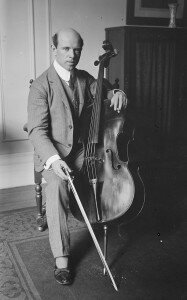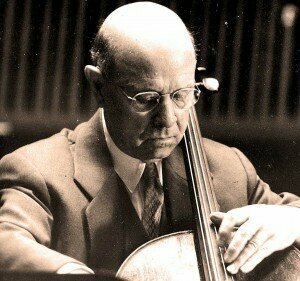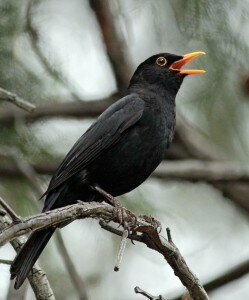
The young Pablo Casals (1917)
It has been a favourite of cellists ever since.
We’ll start with an early performance by Casals at the White House in 1961.
He also arranged it for cello ensemble:
Casals: El cant dels ocells (Song of the Birds) (Pablo Casals, cello; Prades Festival Orchestra)
The Japanese cellist Kenichiro Yasuda arranged it for cello solo, eliminating the piano part.

Pablo Casals (1945)
Carrying the timbre forward, it has been arranged for bassoon and piano.
Casals: El cant dels ocells (Song of the Birds) (Koji Okazaki, bassoon; Etsuko Okazaki, piano)
For flute and guitar, for a complete change of tessitura.
Casals: El cant dels ocells (Song of the Birds) (Yoshie Ueno, flute; Tomonori Arai, guitar)
The arrangement for viola and piano is particularly interesting, mostly for the warm voice of the viola.
Casals: El cant dels ocells (Song of the Birds) (Richard O’Neill, viola; Christopher Park, piano)

Blackbird
Casals: El cant dels ocells (Song of the Birds) (Genevieve Laurenceau, violin; Shani Diluka, piano; Les Chanteurs d’Oiseaux)
All of these recordings share one characteristic: that of tempo. What happens when you kick up the tempo and move the performance to two Japanese Tsugaru Shamisens? The middle section returns us to the more familiar tempo, but in the context of the faster beginning and ending sections, it changes the composition.
Now we can hear it a whole new way, and not as a lament for a long country.
